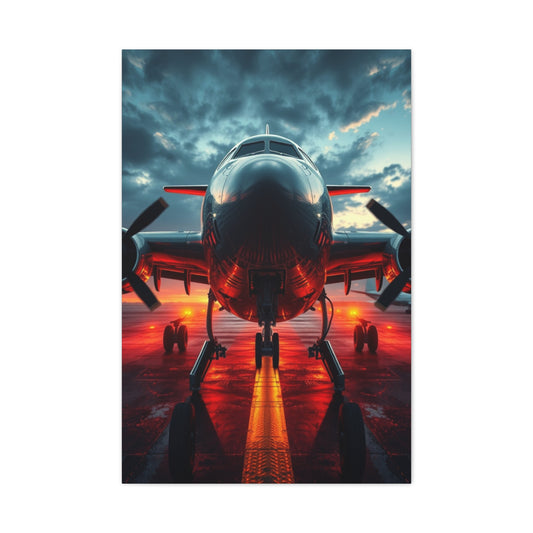Picnic photography is an inspiring blend of lifestyle storytelling, natural beauty, and heartfelt interaction. Whether you're photographing a cozy romantic date, a candid family picnic, or a styled lifestyle campaign, outdoor picnic scenes are perfect for evoking emotion and a sense of nostalgia. The combination of nature, food, and human connection offers limitless visual potential.
This comprehensive guide will take you through 11 refined tips that will help you craft stunning picnic photos that feel both relaxed and professionally composed.
1. Clarify the Vision and Purpose of Your Picnic Shoot
Every outstanding picnic photoshoot begins with a clearly defined intention. Before you even touch your camera or choose props, it's essential to articulate the core purpose of the shoot. Doing so not only streamlines your creative process but also ensures that every element, from location to lighting, serves a cohesive narrative.
Ask yourself or your client: What story is this picnic setup meant to tell? Is it a romantic engagement session capturing the warmth of a blossoming relationship? A relaxed family gathering highlighting multigenerational love? Or perhaps it’s a styled lifestyle shoot meant to represent a brand’s identity, evoking a rustic or bohemian charm?
Being clear about the goal influences decisions such as wardrobe selection, posing guidance, and even color grading in post-processing. A surprise proposal may require discreet candids and emotionally charged angles, while a commercial shoot demands a clean, product-centric composition.
Once the purpose is established, begin planning your visual direction. Pre-visualization tools like sketching a rough storyboard, building a mood board on Pinterest, or compiling reference images in a folder can help you align your creative vision with logistical needs. This step allows you to determine whether you'll be shooting wide environmental portraits, close-up food compositions, or storytelling sequences—and how those elements will weave into a unified gallery.
Understanding your audience is another key aspect. If the photos are destined for social media, think about vertical framing and dynamic storytelling. If they’re intended for print or personal keepsakes, prioritize timelessness and narrative depth.
|
Related Catagories: |
2. Scout and Select the Most Suitable Outdoor Setting
The location you choose will serve as the canvas for your picnic photos. It's not just about finding a pretty backdrop; it’s about selecting a setting that enhances the overall mood and theme of the shoot. The environment should feel intentional and integrated with the story you’re trying to tell.
Nature offers a range of atmospheric options for picnic scenes:
-
A wildflower meadow for dreamy, romantic tones
-
A lakeside with calm water for serene and reflective imagery
-
A forest clearing with dappled sunlight for intimacy and texture
-
A coastal beach for breezy, windswept romance
-
A hillside vineyard for upscale and elegant visuals
Each location adds its own emotional and visual cues. For example, a blanket under a willow tree evokes nostalgia and softness, while a rocky beach creates contrast and moodiness.
If you’re considering urban or residential alternatives, a well-manicured backyard, a city park with flowering trees, or even a quiet rooftop terrace can be beautifully styled to resemble a countryside picnic. These settings offer greater control over lighting, logistics, and comfort—particularly important for families with children or elderly participants.
When scouting, assess the light at different times of day. Morning light tends to be crisp and cool, while late afternoon offers warm, golden hues. Make note of natural light patterns, shade availability, and any reflective surfaces nearby that could affect your exposure. A spot that seems perfect at first glance may be plagued by shifting shadows or harsh glare during your planned shoot time.
Practicality is equally crucial. Ask the following:
-
Is the location easily accessible for your subjects and equipment?
-
Are there restrictions or permits required for professional photography?
-
Does the ground allow for comfortable seating and prop placement?
-
Will you be able to avoid crowds, onlookers, or excessive noise during your session?
If you’re planning a larger setup with food, props, or styled furniture, consider how close your parking or drop-off point is to the location. Long treks with heavy gear can eat into your shooting time and energy.
Don't forget the impact of weather. While overcast skies can provide diffused, even lighting, sudden wind gusts or drizzle can complicate your shoot. Check weather forecasts and have backup plans, such as nearby covered areas or easy-to-set-up umbrellas or canopies.
In some cases, obtaining permission to shoot on private land—such as a friend’s orchard, a local farm, or a quaint garden—can open up exclusive and charming locations free from the distractions of public parks.
Be sure to scout your location at the same time of day you plan to shoot. Light behaves differently depending on time, season, and cloud cover. Visiting at golden hour gives you the best idea of how the sun will interact with your subjects and the surroundings.
Another valuable tip: look for natural vignetting elements such as overhanging trees, floral arches, or curved pathways. These features can help naturally frame your subjects and add layers of interest to your photos without artificial manipulation.
While it’s tempting to choose a location based solely on aesthetics, always prioritize functionality and adaptability. A location that supports your workflow, comfort, and safety will produce better results than one that looks good but lacks accessibility or flexibility.
Lastly, consider your proximity to restrooms, seating, and shaded areas. These amenities are particularly helpful when working with families, children, or older adults, ensuring everyone stays comfortable throughout the session.
3. Evaluate the Background and Composition Elements
In outdoor photography—especially in stylized sessions like a picnic shoot—the background plays just as crucial a role as the subject itself. A visually engaging foreground loses impact if the backdrop is cluttered, distracting, or out of sync with the narrative you aim to portray. Before setting up your picnic scene, take time to observe the area. Walk around, look through your lens or viewfinder, and analyze what surrounds the location. Distractions like power lines, parked cars, mismatched signage, or modern structures can interrupt the organic, peaceful atmosphere often desired in picnic photography. These elements may seem minor at first glance, but they can quickly dilute the authenticity and warmth you’re trying to capture.
Seek backgrounds that elevate the emotional tone—open fields with wild grass, softly wooded areas, lake reflections, or even rustic fences. These elements naturally enrich your scene and provide visual context. Natural frames work wonders too. Consider tree canopies, flower arches, or even the curve of a picnic umbrella to gently enclose your subject. These compositional aids draw the viewer's focus and add structural elegance to your shot.
Using depth of field intentionally can also transform your compositions. Wide apertures blur the background, helping isolate your subject while preserving the atmosphere. For example, an f/2.2 setting on an 85mm lens softens trees or mountains behind a couple sharing a blanket, directing the eye where it matters most. For scenes where the location is just as important as the people—like a destination picnic by the ocean—use a slightly narrower aperture (like f/4 or f/5.6) to retain environmental detail without losing subject focus.
Good background evaluation isn’t only about avoiding the wrong elements—it’s about including the right ones with care and creativity. Visual harmony creates emotional resonance, and that begins with thoughtful framing.
4. Utilize Golden Hour for Atmospheric Lighting
In natural light photography, timing is everything. The golden hour—shortly after sunrise or just before sunset—is one of the most cherished times for outdoor shooting. The light is soft, diffused, and golden-toned, making it ideal for capturing warm, inviting picnic imagery.
The harsh overhead light of mid-day creates challenges: stark shadows, uneven highlights, and often squinting subjects. These conditions can wash out colors, emphasize skin texture undesirably, and cause exposure difficulties—particularly on reflective surfaces like glassware or metal props. Golden hour, in contrast, delivers a low-angle light that wraps gently around subjects. Skin appears luminous, shadows fall gracefully, and the warm hue infuses photos with a romantic, nostalgic atmosphere.
Whether you're shooting a family laughing over lemonade or a couple clinking champagne glasses, the golden light enhances every aspect—from facial expressions to food textures and textiles. It also adds natural contrast, eliminating the need for heavy editing.
Plan ahead to make the most of this fleeting window. Arrive early to scout where the light will hit and have your scene set up before the best light arrives. Use reflectors (white or gold, depending on tone) to direct fill light onto shadowed areas. For strong backlighting, position your subjects so the sun is just behind them, and consider spot metering for faces to ensure proper exposure.
Backlighting during golden hour creates beautiful rim lighting—those glowing edges around hair or fabric that add ethereal charm. You can also experiment with lens flare, shooting slightly into the sun to add dreamy visual texture.
Understanding light is what separates a decent outdoor photo from a captivating one. Golden hour provides the most forgiving and flattering conditions, and when paired with a thoughtfully styled picnic scene, it allows your creativity to shine effortlessly.
5. Coordinate Wardrobe with Theme and Surroundings
Wardrobe styling is an often underestimated yet powerful tool in picnic photography. The clothing worn by your subjects not only contributes to the visual harmony of the images but also reflects the mood, story, and environment. Coordinating wardrobe choices thoughtfully ensures that the photos feel polished, cohesive, and emotionally resonant.
Start by considering the overarching theme of the picnic. Is it a relaxed family gathering, a romantic engagement session, a boho-inspired brand shoot, or a minimalist lifestyle spread? Each theme suggests a distinct style language. For instance, floral dresses and flowing skirts pair beautifully with meadow or garden settings, while clean white linens and nautical tones suit beachside scenes.
Natural, breathable fabrics such as cotton, linen, and lightweight wool work best for outdoor sessions. These materials not only provide comfort for your models but also photograph well under soft daylight, capturing folds, textures, and natural movement. Avoid synthetic fabrics or overly stiff clothing, as they may appear harsh under natural light and restrict comfort during long sessions.
Stick to a color palette that blends well with the natural surroundings. Earthy tones like sage, sand, mustard, and clay complement fields, forests, and rustic settings. Pastels—think blush, powder blue, and lavender—pair well with sunny, open-air meadows or floral-rich backdrops. If you're shooting by the sea or a lakeside, shades of cream, navy, seafoam, or dusty blue lend a calming, breezy aesthetic.
Encourage your subjects to avoid logos, overly bright neon hues, and busy patterns unless they serve a specific creative purpose. These can clash with natural environments and distract from the subject’s expressions and interactions.
For family or group sessions, opt for coordination without strict matching. Suggest outfit palettes that feature tones from the same family or that complement each other without being identical. This allows for individuality while maintaining visual unity. A family might wear shades of tan, cream, and olive with subtle variations in texture or layering, giving the photo depth and nuance.
Couples' attire should evoke warmth and intimacy. Recommend soft dresses, vintage blouses, rolled-up chinos, suspenders, or even barefoot moments to reflect closeness and playfulness. Accessories like straw hats, scarves, or shawls can be layered in for extra charm, especially in transitional weather.
Consider comfort above all. If a subject feels awkward in their outfit, it will reflect in their posture and expressions. Make sure your wardrobe choices align with the season and weather forecast. Summer heat calls for airy fabrics and minimal layers, while cooler temperatures benefit from cozy knits, blankets, and boots.
For stylized shoots, bring backup options in case of unforeseen wardrobe malfunctions or weather changes. A quick change of shirt or adding a wrap can refresh the entire look without needing a full wardrobe overhaul.
In commercial or editorial work, where brand aesthetics are critical, align clothing choices with the client’s color palette, ethos, and visual style. Create mock-ups or conduct wardrobe consultations beforehand to maintain consistency across multiple scenes.
Ultimately, wardrobe coordination is more than just a fashion decision—it’s a storytelling device. When well-executed, it anchors your subjects in the scene, enhances mood, and elevates your overall composition.
6. Incorporate Authentic Picnic Props and Decor
Props and decor are the soul of a picnic-themed photoshoot. They transform an ordinary outdoor space into a curated, storytelling environment. The right props add depth, dimension, and character to your composition while offering tangible interaction for your subjects, leading to more relaxed and candid expressions.
|
Related Catagories: |
Start with the essentials that define a picnic atmosphere. A classic woven basket overflowing with fresh fruit, bread, or cheese sets a timeless tone. Choose a blanket with texture and visual appeal—tartan, gingham, or neutral-toned throws work beautifully in natural light. Consider layering with fabric runners or textured cushions for extra comfort and style.
When selecting food items, prioritize those that are colorful, textural, and hold up well under the sun. Think clusters of grapes, juicy strawberries, artisan bread, croissants, figs, and a charcuterie board with cured meats, nuts, and cheeses. These items not only add richness to the scene but also provide action cues—subjects sharing, biting, or reaching creates dynamic storytelling moments.
Glass bottles of lemonade, mason jars filled with herbal tea, or fluted glasses of champagne introduce sparkle and reflection. Use wooden trays, ceramic plates, and vintage cutlery for tactile contrast against the natural elements. Avoid plastic packaging or overly branded labels unless integrated intentionally for commercial purposes.
Enhance the ambiance with natural or crafted elements—bouquets of wildflowers in jars, bundles of lavender, macrame coasters, beeswax candles, or fairy lights strung from nearby trees if shooting near dusk. A small chalkboard, a handwritten note, or a favorite book placed casually on the blanket adds personality and allows for symbolic layers.
Props also provide direction for poses and interaction. A couple might clink glasses, feed each other fruit, or lie back on a pillow with a book. Children might stack cookies or chase a balloon. These spontaneous actions become storytelling gold, evoking authenticity and joy.
Be intentional with spacing. Too many props can clutter the frame and overwhelm the subject. Use the “less but better” approach—fewer items, arranged with thoughtfulness and narrative purpose, create a stronger visual impact. Negative space within the frame helps your subject breathe and stand out.
The visual weight of props should also be considered. Balance bold colors or larger items with more neutral elements. For example, a brightly colored pillow can be offset with a linen cloth or rustic wood plank. Arrange props in layers—from foreground to background—to guide the viewer’s eye naturally through the scene.
If your shoot extends into late afternoon or early evening, prepare lighting enhancements. Lanterns, string lights, or a small bonfire (if safe and permitted) can completely transform the mood from light and airy to warm and intimate.
In commercial or styled shoots, ensure all props align with the desired brand voice or editorial message. Eco-conscious clients may prefer sustainable decor like bamboo cutlery, linen napkins, or reusable glass containers. Vintage-inspired brands might lean toward enamel mugs, lace runners, and antique books.
Transporting props efficiently is another logistical factor. Use compartmentalized baskets or crates, and prepare a checklist to avoid forgetting small but essential details like a bottle opener or blanket weights on breezy days.
Lastly, always leave your location as you found it. Respecting nature and public spaces not only aligns with ethical photography practices but also ensures that beautiful locations remain available for others to enjoy.
Incorporating authentic props and decor elevates your picnic photography from snapshot to storytelling. When thoughtfully selected and arranged, props invite emotion, interaction, and immersion, helping you capture not just a scene, but a memory in the making.
7. Plan Interactive Elements for Families and Children
One of the greatest joys of photographing a picnic session is the energy and spontaneity that naturally emerge—especially when working with families. Unlike traditional studio portraits, outdoor picnic photography thrives on interaction, movement, and real emotions. Instead of relying on static poses, embrace the dynamic nature of family connections by incorporating playful, engaging elements into the scene. Start by encouraging the family to bring items that are familiar and meaningful to them. This might include a board game they often play together, a favorite children’s storybook, or well-loved stuffed animals. These props not only keep kids comfortable and engaged but also help bring out their personalities in front of the camera. Outdoor-friendly items like bubbles, soft balls, jump ropes, or kites are excellent for creating movement and capturing joy. Young children especially may find it hard to stay still for long—offering them something to do keeps the atmosphere light and fun while allowing you to photograph them as their genuine selves. Interactive activities like sharing snacks, pouring lemonade, or picking flowers work well for older children and parents. You can guide the family to sit in a circle, pass food around, or have a parent braid their child’s hair—all subtle gestures that convey intimacy and affection. Begin your session with loose direction and minimal interference. Let the family settle into the environment naturally. Observe their rhythms and build trust before introducing more structured poses. As the shoot progresses and everyone grows more comfortable, you can gradually suggest simple positioning: “Let’s sit together on the blanket,” or “Can you hold your sister’s hand while you show her your toy?” During these natural transitions, capture both the grand moments—like a shared laugh—and the subtler gestures—a gentle touch on the shoulder, a glance between siblings, or the way a child leans into a parent. These small moments often carry the deepest emotional weight. Group compositions benefit from layering and perspective. Use the foreground to frame the children at play, with the parents smiling in the background, or vice versa. Shoot from different heights and distances—overhead for playful chaos, eye-level for connection, or wide-angle to show the entire setup in context. Also, don’t forget individual portraits. Between group photos, take a moment to photograph each child on their own. Let them pose with a favorite toy, giggle with a bubble wand, or simply sit cross-legged on the picnic blanket. These portraits often become treasured keepsakes. The goal in family picnic photography is not perfection. It’s capturing connection in a joyful, relaxed atmosphere. By planning interactive elements and allowing for unstructured play, you create a space where memories unfold organically—and the camera simply documents the magic as it happens.
8. Tell a Romantic Story Through Couples Picnic Photography
When photographing couples, a picnic session offers an opportunity to blend romance, nature, and candid storytelling. Unlike posed studio portraits, a picnic shoot lets the couple interact freely in a natural setting, giving you the chance to document genuine chemistry and heartfelt emotion. Begin by conceptualizing the session as a narrative. Think of it as a visual story unfolding—from the moment the blanket is laid down to the final sip of wine under a setting sun. Encourage the couple to bring personal items that hold meaning: a favorite bottle of wine, a book they read together, or a playlist that tells their love story. These intimate details set the tone and elevate the shoot from generic to personal. The flow of a couples picnic shoot should mimic the arc of a real date. Start with action: unpacking food, arranging items, laughing as they share a bite of fruit. These natural movements give your subjects something to focus on besides the camera, allowing for candid expressions and relaxed body language. Next, guide them into interactions that foster closeness. Have them sit cross-legged facing each other, toast with drinks, or feed each other berries. Suggest they lie on the blanket side-by-side, looking up at the trees or clouds. These intimate postures foster connection and offer a quiet, observational moment you can document without interruption. Don't shy away from physical contact—it’s a key element in romantic storytelling. Hand-holding, shoulder brushes, resting a head in a lap—all of these small gestures tell a bigger story of comfort and love. Be mindful of natural light falling across their hands or catching the glint of jewelry—these details create texture and visual interest in your frame. Use your environment to shape the mood. Position the couple so that trees form a frame around them, or shoot through hanging leaves or wildflowers for added depth. Place the sun behind them during golden hour for dreamy rim lighting, or use a reflector to softly brighten their faces as they lean into one another. For anniversary or proposal shoots, add symbolic touches. Champagne flutes, framed photos from past years, handwritten letters, or a bouquet can add layers to the story. If a proposal is planned during the session, keep the setup subtle and unobtrusive so the moment remains intimate and uninterrupted. Encourage movement when appropriate. Ask them to slow dance barefoot on the grass, walk hand-in-hand toward the horizon, or run with a flowing scarf trailing behind. These movements infuse energy and spontaneity into the session and often yield striking visuals. Portraits are still important in a couple’s shoot. Take a few moments for more composed shots—both looking into the camera, one person gazing at the other, or standing closely with serene expressions. These frames offer balance to the more candid imagery and round out the collection. Finally, be emotionally present. Pay attention to their story, their dynamic, and their comfort. Some couples are naturally expressive, while others are more reserved. Adapt your approach accordingly—gentle encouragement, humor, or silence can each be powerful tools in bringing out authentic emotion. A picnic is more than a visual backdrop; it’s a stage for real memories to unfold. When your couple feels safe, connected, and fully immersed in the moment, your images will radiate honesty and romance—creating photographs they’ll cherish for years to come.
9. Emphasize the Details and Textures
While sweeping wide-angle shots help establish the setting in picnic photography, it’s the fine details and tactile textures that truly immerse your viewer into the scene. These elements provide subtle storytelling cues, invite emotional resonance, and add richness to your photo collection. When curated thoughtfully, close-up images become visual poetry, anchoring the narrative in atmosphere and nuance.
Details allow you to capture the moments most people overlook—the dew glistening on grass blades at dawn, the soft ruffling of a picnic blanket caught in the breeze, or the gentle curve of a petal resting on the rim of a teacup. These intimate visuals serve not only as aesthetic additions but also as mood enhancers that complete the emotional arc of your shoot.
Begin with the tableware and food—these are often brimming with visual interest. Focus on crumbs scattered across a wooden board, the condensation dripping down the side of a chilled glass, or the colorful layers of a stacked sandwich. Highlight textures like woven rattan baskets, linen napkins, glossy fruit skin, or flaky pastry crusts.
Use a macro lens or a fast prime lens like a 50mm f/1.8 or an 85mm f/1.4 to isolate these elements from their surroundings. The shallow depth of field achieved with a wide aperture allows you to keep your detail sharp while softly blurring the background for visual emphasis. This technique draws the viewer’s attention exactly where you want it—on the essence of the moment.
Natural surroundings also offer ample material. Capture sunlight filtering through leaves, shadows dancing across the blanket, or the soft fuzz of a bee resting on a flower. Look for reflections in glassware, fabric folds under weight, or patterns in wooden grains. Every one of these elements adds context, mood, and visual texture to your story.
Don’t just shoot the objects—shoot the interactions with them. A hand delicately reaching for grapes, fingers brushing over book pages, or toes curled against the grass all evoke intimacy and connection. These kinds of shots work especially well when documenting couple or family sessions.
Color and texture play a major role in visual storytelling. Seek out contrasts—bright fruit against muted fabric, shiny metallic cutlery against a rustic wooden tray. These juxtapositions create visual tension that enlivens your frame. Soft-focus bokeh from dappled light or backlit lace can add another dimension of visual intrigue.
When planning your shot list, designate space for a series of detail-focused compositions. These not only serve as beautiful standalone pieces but also work as supporting images in an album, blog post, or social media series. They offer breathing room between portraits and scenes, contributing to a more dynamic and layered visual experience.
Details ground your photo story in the tactile and tangible. They invite the viewer to feel as if they were there—touching the basket’s weave, smelling the citrus, or listening to the soft rustle of leaves. By celebrating these small yet significant elements, you elevate your picnic photography from casual snapshots to carefully observed storytelling.
10. Arrange Group Shots with Connection in Mind
When photographing picnics that include families, friends, or multiple generations, group shots become an essential part of the storytelling. But rather than treating them as obligatory formality, view group compositions as opportunities to highlight intimacy, camaraderie, and the joy of shared experience.
Start by understanding the dynamics of your group. Are you photographing a close-knit family, a group of friends reuniting, or a multi-generational celebration? This context will shape how you position them and what kinds of interactions to encourage. For example, a lively group of college friends may thrive in more spontaneous, energetic arrangements, while a family session may benefit from slower, more intimate groupings.
Ditch rigid lines and formal poses. Instead, encourage relaxed, organic formations. Have everyone sit on the blanket in a semi-circle, lean into one another, or lounge casually with overlapping limbs. These natural arrangements create layers within your composition and signal comfort and connection. Invite light conversation or prompt simple tasks like passing food, pouring drinks, or playing a card game. These interactions foster genuine expressions and often lead to shared laughter and natural closeness.
Be intentional with your angles. An overhead shot taken from a stepladder or elevated surface creates a flat-lay feel and can beautifully showcase symmetry, patterns, and placement of props. A low-angle shot, on the other hand, places your group against a backdrop of sky or trees, creating a sense of openness and unity.
Work with spacing and balance. Place people so their heads aren’t aligned at the same height unless aiming for symmetry. Varying levels—some sitting, some lying down, some slightly leaning—adds rhythm and dynamism to the frame. Use children or pets to add whimsical energy; their unpredictable movements often spark genuine reactions and delightful photo opportunities.
Avoid over-directing. Instead of giving static instructions like “everyone smile,” create scenarios that allow emotion to arise naturally. Ask a parent to tickle a toddler, suggest a group toast, or propose a mini game of charades. These micro-interactions help you capture laughter, eye contact, and subtle gestures that might otherwise be missed.
Lighting is particularly important in group photos, where variations in exposure can easily occur. Try to place everyone in even light, especially during golden hour. If one side of the group is in deep shadow and the other brightly lit, use a reflector to balance the exposure or reposition your subjects to ensure uniformity.
Use lenses with mid-range focal lengths (such as 35mm or 50mm) for wide group scenes and longer primes (85mm or 105mm) for tighter compositions. These lenses reduce distortion while keeping your group sharp and visually cohesive. Avoid going too wide unless the background is a significant part of the storytelling, such as in panoramic nature shots.
Include a mix of compositions in your session. Begin with loosely posed shots that establish the group dynamic, then transition to smaller clusters—siblings, couples, parents with children—to add variety and emotional depth to your collection.
Above all, your goal is to preserve the feeling of togetherness. Whether the group is big or small, animated or serene, each arrangement should convey authenticity and warmth. Let gestures, glances, and shared moments define your group portraits—not just symmetrical poses.
By composing your group photos with emotion and narrative intent, you turn collective memories into timeless visuals. It’s not about perfection—it’s about connection. When your group photos reflect this, your picnic session becomes far more than a collection of faces; it becomes a portrait of human connection in its most joyful form.
11. Let Moments Unfold Naturally
Even with the best preparation, the most powerful picnic photos often happen spontaneously. Encourage your subjects to relax, interact, and forget about the camera for moments at a time. Keep your camera ready to catch laughter, unexpected hugs, gentle touches, or spontaneous bursts of playfulness.
Don’t be afraid to step back and observe the flow of the picnic. Allowing the session to unfold organically not only makes your subjects feel more at ease but also helps you capture authenticity and real emotion.
Blend your technical expertise with intuition. Adapt your framing and exposure to suit fleeting lighting shifts or sudden movement. The best frames are often the unplanned ones.
Final Thoughts on Picnic Photography
Picnic photography is one of the most versatile and rewarding outdoor genres. It’s a balance between planned styling and capturing spontaneous emotion. The combination of nature, light, food, and human connection creates opportunities to tell stories that are as timeless as they are joyful.
With the right preparation, creative vision, and a bit of flexibility, you can create captivating, atmospheric images that resonate deeply with viewers. Whether it’s a romantic moment beneath a tree, siblings sharing strawberries, or friends enjoying sunset laughter, your lens becomes a portal into meaningful moments.
So pack your camera, prep your picnic kit, and chase that golden light—there’s magic waiting in every meadow.























